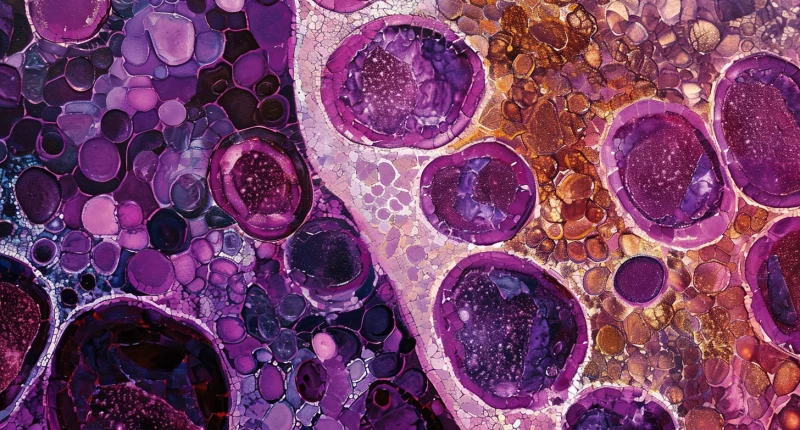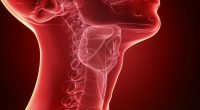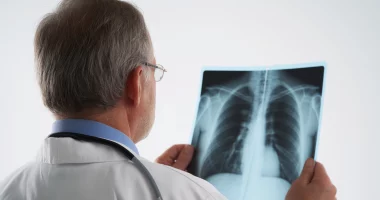Hodgkin’s lymphoma (HL)
Introduction
Hodgkin’s lymphoma is a chronic disease in which there is an increase in the volume of lymphoid tissue with the formation of granulomas (i.e., areas of tissue overgrowth). The lesion involves one or more groups of lymph nodes and often the spleen. The pathology requires complex treatment, which includes removal of the affected tissue, radiation, and chemotherapy.
About the disease
Hodgkin’s lymphoma also goes by the name lymphogranulomatosis. To date, it is the second most frequent blood disease, second only to leukemia. Doctors distinguish dangerous ages: 20-30 years old and over 60 years old. In men, lymphogranulomatosis occurs twice as often as in women.
Classification of lymphogranulomatosis
In the process of development, lymphogranulomatosis passes four stages, which are determined by the prevalence of the pathological process:
- Stage I (local): only one group of lymph nodes or one organ not connected to the lymphatic system (extra-lymphatic) is affected; this may be the pleura, liver, kidneys, lungs, etc.;
- Stage II (regional): the lesion involves two or more groups of nodes in the upper or lower half of the body (bordered by the diaphragm) or one extra-lymphatic organ in combination with associated nodes;
- Stage III (generalized): lesions of nodes in both halves of the body and additionally one extra-lymphatic organ in combination with the spleen or without its involvement were detected;
- Stage IV (disseminated): one or more extra-lymphatic organs and lymph nodes are affected.
Determining the stage of the disease plays a vital role in the treatment selection.
Depending on its course, Hodgkin’s lymphoma can be acute (the process of development takes a few months) or chronic (lasts for years, during which periods of exacerbation and remission alternate). There is also a classification based on the localization of the lesion. It distinguishes peripheral, pulmonary, gastrointestinal, abdominal, bone, and other types of lymphocytic leukemias.
Symptoms of Hodgkin’s lymphoma
The primary and very first sign of lymphogranulomatosis is an enlargement of one or more lymph nodes. As a rule, the cervical or supraclavicular groups are affected, less often inguinal, femoral, and axillary. Enlarged nodes have a dense consistency, do not adhere to the surrounding tissues and each other, and are easily displaced under the skin. There is no soreness when pressing. As a rule, when you feel a chain of several rounded formations.
Sometimes, the disease begins with an increase in the internal groups of lymph nodes. In this case, non-specific symptoms come to the fore: coughing, belching, difficulty swallowing, and feeling of a lump in the throat. When the nodes in the abdominal cavity are affected, the patient may complain of abdominal pain unrelated to food intake and/or swelling of the legs.
When organs other than the lymphatic system are affected, the patient complains of the corresponding symptomatology: signs of pneumonia when the lungs are affected, bone pain in the bone form, intestinal bleeding in the intestinal form, etc.
The general symptoms of the disease are similar to other hematologic and oncologic diseases. The patient complains of periodic fever with peaks up to 39 degrees, night sweats, weight loss, and skin itching.
Reasons
The exact causes of lymphogranulomatosis in adults are unknown; the hereditary and viral theory of disease formation is in use. In the first case, the pathology is associated with the Epstein-Barr virus (causative agent of infectious mononucleosis), and in the second case, with hereditary predisposition. A connection with HIV is not excluded.
Diagnosis
Diagnosis of lymphogranulomatosis begins with the collection of complaints and anamnesis, after which the doctor conducts an objective examination. He checks the condition of the lymph nodes and spleen, assessing their size. If suspicious signs are detected, the patient is referred to advanced diagnostics aimed at finding possible foci:
- Ultrasound of the abdominal cavity and retroperitoneal organs;
- Lymph node ultrasound;
- Chest X-ray or CT scan;
- Bone scintigraphy, etc.
If foci of lesions are detected, they are biopsied. In parallel, tests are taken: a general blood test, biochemical studies aimed at assessing the function of internal organs, etc.
Treatment
Treatment of lymphogranulomatosis requires a comprehensive approach. Doctors act step by step, seeking to stop the growth of pathological tissue in lymph nodes and organs and eliminate all pathological foci. For this purpose, thefollowing methods are used:
- radiation therapy: dosed irradiation of problem areas;
- chemotherapy on various regimens;
- removal of the affected nodes and the spleen.
The choice of a particular treatment method or combination of treatments depends on the stage of the disease and its form.
All these treatment options are available in more than 740 hospitals worldwide (https://doctor.global/results/diseases/hodgkins-lymphoma-hl). For example, splenectomy can be performed in 30 clinics across Germany for an approximate price of $20.5 K (https://doctor.global/results/europe/germany/all-cities/all-specializations/procedures/splenectomy).
Prevention
There is no specific prevention of lymphogranulomatosis. The main task of the patient is to consult a doctor promptly for any suspicious symptoms and not self-medicate. Regular fluorography and screening examinations will allow the timely detection of changes in deep lymph nodes.
Rehabilitation
The results of treatment for Hodgkin’s disease can vary. Depending on the specific situation, doctors may be able to achieve:
- complete remission: absence of any signs of the disease for a month or longer;
- partial remission: reduction in the size of pathological foci by 50% or more, as well as the complete disappearance of unpleasant symptoms;
- clinical improvement: less than 50% reduction in the foci size.
There may be no dynamics or progression of the disease even with properly selected treatment.
During remission, a specialist should regularly monitor patients to avoid excessive insolation and extreme physical exertion. In some situations, periodic supportive therapy is also prescribed during the rehabilitation period.


